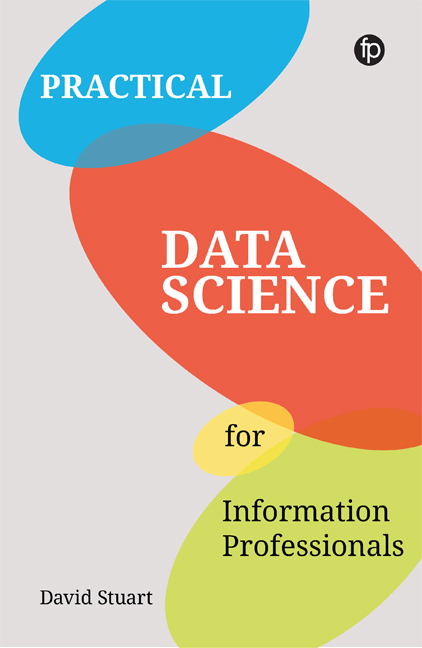Book contents
- Frontmatter
- Dedication
- Contents
- Figures
- Tables
- Boxes
- Preface
- 1 What is Data Science?
- 2 Little Data, Big Data
- 3 The Process of Data Science
- 4 Tools for Data Analysis
- 5 Clustering and Social Network Analysis
- 6 Predictions and Forecasts
- 7 Text Analysis and Mining
- 8 The Future of Data Science and Information Professionals
- References
- Appendix – Programming Concepts for Data Science
- Index
5 - Clustering and Social Network Analysis
Published online by Cambridge University Press: 14 August 2020
- Frontmatter
- Dedication
- Contents
- Figures
- Tables
- Boxes
- Preface
- 1 What is Data Science?
- 2 Little Data, Big Data
- 3 The Process of Data Science
- 4 Tools for Data Analysis
- 5 Clustering and Social Network Analysis
- 6 Predictions and Forecasts
- 7 Text Analysis and Mining
- 8 The Future of Data Science and Information Professionals
- References
- Appendix – Programming Concepts for Data Science
- Index
Summary
By this stage of the book information professionals should have a good idea of what data science is, the steps involved, and some of the myriad of tools now available. In this and the next two chapters we look more closely at specific techniques that may be applied by information professionals. First, in this chapter, we look at clustering and social network analysis, before moving on to look at the statistical methods for forecasting in Chapter 6, and finally text analysis and mining in Chapter 7.
Clustering and social network analysis enable evaluative and relational insights into a set of networked data. This may be the relationship between people and organisations, the similarity between documents, or the centrality of an entity in a network. This chapter discusses some of the main clustering and social network analysis methodologies, their potential application by information professionals, and how they can be simply calculated, primarily using the example of bibliographic data sets. Clustering based on the content of documents is returned to in Chapter 7 – ‘Text analysis and mining’, in the form of topic modelling.
Network graphs
Modern social network analysis does not have a neat linear history, but rather has emerged from innovations and interactions between the sub-disciplines of social psychology, social anthropology and sociology for an increasingly mathematicised network approach to understanding social networks (Prell, 2012). The whole world, with the exception of a few isolated individuals and tribes, may be thought of as a giant socially networked graph, and as Milgram's famous paper found it is in fact a small world, where there are on average six or fewer social connections between all people on the planet (Milgram, 1967). The validity of the original paper is open to debate (Kleinfeld, 2002), however the internet and the web have given us access to vast quantities of networked data and similar small worlds have been found in e-mail (Dodds, Muhamad and Watts, 2003) and instant messaging (Leskovec and Horvitz, 2008).
At the same time as social network analysis was developing, library and information science researchers were developing methodologies for analysing their own graph: the bibliographic network.
- Type
- Chapter
- Information
- Practical Data Science for Information Professionals , pp. 77 - 96Publisher: FacetPrint publication year: 2020



